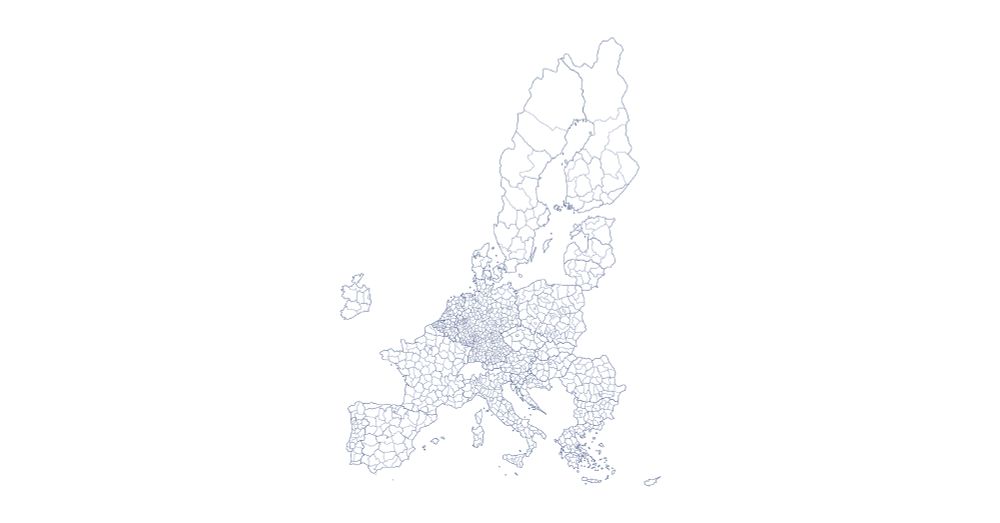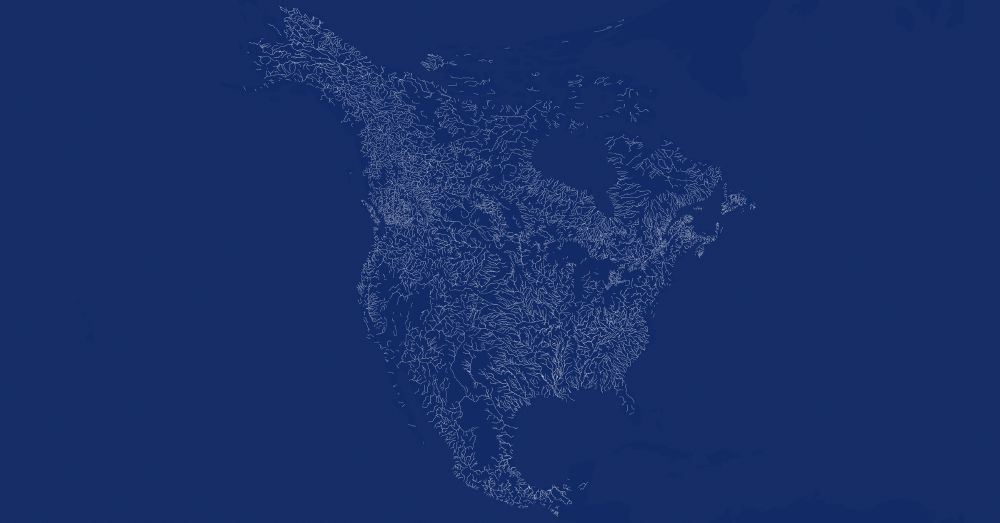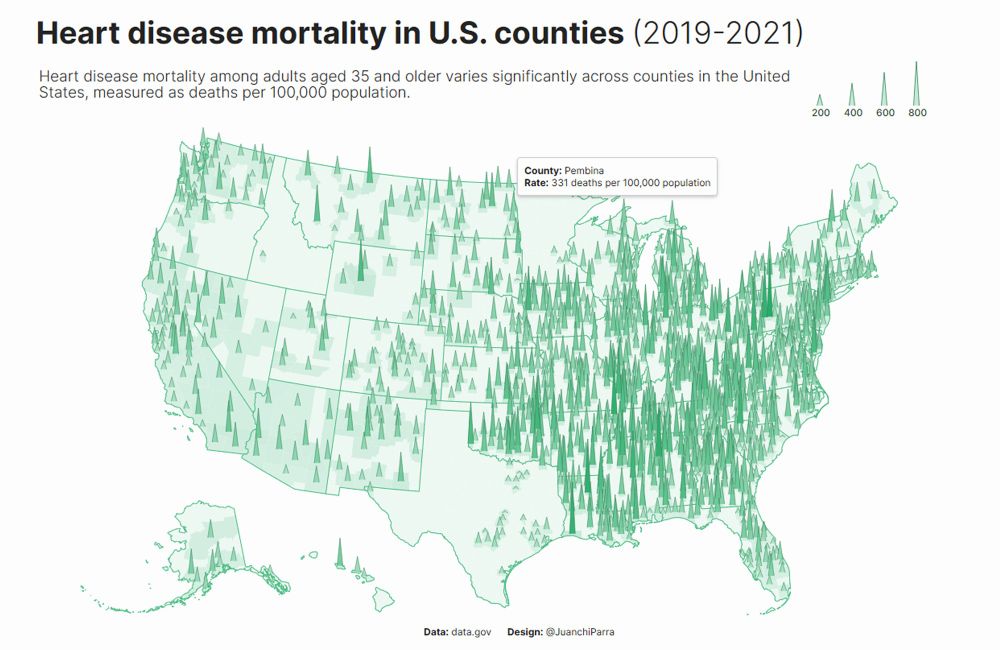For today's challenge, I visualized the roads of Barcelona, Spain.
Tools: QGIS

For today's challenge, I visualized the roads of Barcelona, Spain.
Tools: QGIS
For today's challenge, I created a polygon representation of the city of Mérida, Venezuela, including the surrounding mountains.
This is one of the first effects I learned to implement in QGIS, and it took me about 5:42 minutes to complete.
Tools: QGIS

For today's challenge, I created a polygon representation of the city of Mérida, Venezuela, including the surrounding mountains.
This is one of the first effects I learned to implement in QGIS, and it took me about 5:42 minutes to complete.
Tools: QGIS
For today's challenge, I imagined what some countries might look like in 2125
Can't you see anything beyond the sea? This scenario could become a reality for some low-lying countries as climate change poses a significant threat to their existence
Tools: Figma




For today's challenge, I imagined what some countries might look like in 2125
Can't you see anything beyond the sea? This scenario could become a reality for some low-lying countries as climate change poses a significant threat to their existence
Tools: Figma
For today's challenge, I visualized the main streets of Caracas.
Tools: QGIS + Figma

For today's challenge, I visualized the main streets of Caracas.
Tools: QGIS + Figma
For today's challenge, I have mapped the most frequent weekly flight routes from Argentina, Chile, Colombia, and Panama.
Tools: D3 and Svelte
For today's challenge, I have mapped the most frequent weekly flight routes from Argentina, Chile, Colombia, and Panama.
Tools: D3 and Svelte
For today's challenge, I decided to create a map showing the population density of municipalities in Spain.
I was surprised to learn that there are two municipalities with only three inhabitants.
Tools: QGIS and Figma

For today's challenge, I decided to create a map showing the population density of municipalities in Spain.
I was surprised to learn that there are two municipalities with only three inhabitants.
Tools: QGIS and Figma
To complete this week, I visualized the proximity of healthcare services in Italy by analyzing road travel times.
Tools: QGIS and Figma

To complete this week, I visualized the proximity of healthcare services in Italy by analyzing road travel times.
Tools: QGIS and Figma
For today's challenge, I created a population density map of Chile.
I'm excited to continue improving my skills with QGIS.
Tools: QGIS and Aerialod




For today's challenge, I created a population density map of Chile.
I'm excited to continue improving my skills with QGIS.
Tools: QGIS and Aerialod
For today's challenge, I transformed a 1963 map from Venezuela's former Ministry of Public Works by incorporating the corresponding elevation and terrain data.
Tools: QGIS and Blender



For today's challenge, I transformed a 1963 map from Venezuela's former Ministry of Public Works by incorporating the corresponding elevation and terrain data.
Tools: QGIS and Blender
For today's challenge, I analyzed data from my running activities (14 months)
• Activities: 168
• Total hours: 196,9
• Total distance: 1.717,27 kilometers
• Average per day: 10,47 kilometers
Tools: Strava, Svelte and MapLibre GL JS + CARTO



For today's challenge, I analyzed data from my running activities (14 months)
• Activities: 168
• Total hours: 196,9
• Total distance: 1.717,27 kilometers
• Average per day: 10,47 kilometers
Tools: Strava, Svelte and MapLibre GL JS + CARTO
For this challenge, I chose to illustrate the borders of the countries in the European Union.
Tools: D3


For this challenge, I chose to illustrate the borders of the countries in the European Union.
Tools: D3
For the second challenge, I mapped the rivers and waterways in North America.
Tools: QGIS and D3

For the second challenge, I mapped the rivers and waterways in North America.
Tools: QGIS and D3
For the first challenge, I represented the geographical distribution of over 15,000 Starbucks locations in the United States.
Tools: D3

For the first challenge, I represented the geographical distribution of over 15,000 Starbucks locations in the United States.
Tools: D3
For this last challenge, I moved away from the main idea and the prompt, but I liked the result. Very happy to have done all the challenges.
For those who want to see the source code: github.com/juanchiparra...

For this last challenge, I moved away from the main idea and the prompt, but I liked the result. Very happy to have done all the challenges.
For those who want to see the source code: github.com/juanchiparra...
For today's challenge, I designed my first word cloud, I had the perfect data to do it and didn't want to miss the opportunity. d3-cloud makes it very easy to design.
For those who want to see the source code: github.com/juanchiparra...

For today's challenge, I designed my first word cloud, I had the perfect data to do it and didn't want to miss the opportunity. d3-cloud makes it very easy to design.
For those who want to see the source code: github.com/juanchiparra...
Today, it was time to catch up and do the four challenges I had pending. Only two more to go.
For those who want to see the source code: github.com/juanchiparra...




Today, it was time to catch up and do the four challenges I had pending. Only two more to go.
For those who want to see the source code: github.com/juanchiparra...
Me: I can create a minimalist dumbbell plot that maintains readability and presents information more clearly and precisely.
Also me: I wonder what it would look like if I designed cigarettes to resemble dumbbell plots.


Me: I can create a minimalist dumbbell plot that maintains readability and presents information more clearly and precisely.
Also me: I wonder what it would look like if I designed cigarettes to resemble dumbbell plots.
For today's challenge, I decided to try something different and allow myself to experiment.
For those who want to see the source code: github.com/juanchiparra...
For today's challenge, I decided to try something different and allow myself to experiment.
For those who want to see the source code: github.com/juanchiparra...
For today's challenge, I used data from the U.S. Energy Information Administration regarding energy production.
For those who want to see the source code: github.com/juanchiparra...

For today's challenge, I used data from the U.S. Energy Information Administration regarding energy production.
For those who want to see the source code: github.com/juanchiparra...
Today, it was time to catch up and do the four challenges I had pending.
For those who want to see the source code: github.com/juanchiparra...




Today, it was time to catch up and do the four challenges I had pending.
For those who want to see the source code: github.com/juanchiparra...
For this challenge, I chose a dataset of temperatures so far in 2025 from the Vostok station in Antarctica.
For those who want to see the source code: github.com/juanchiparra...

For this challenge, I chose a dataset of temperatures so far in 2025 from the Vostok station in Antarctica.
For those who want to see the source code: github.com/juanchiparra...
For this challenge, I chose a complicated topic to explain and a complicated animation to set up. I believed it was a perfect combination.
For those who want to see the source code: github.com/juanchiparra...

For this challenge, I chose a complicated topic to explain and a complicated animation to set up. I believed it was a perfect combination.
For those who want to see the source code: github.com/juanchiparra...
For this challenge, I utilized the structure of my Obsidian workspace to replicate it using D3.
For those who want to see the source code: github.com/juanchiparra...

For this challenge, I utilized the structure of my Obsidian workspace to replicate it using D3.
For those who want to see the source code: github.com/juanchiparra...
For this challenge, I chose data from the World Development Indicators to create the cluster. I love it when I have the opportunity to use K-means.
For those who want to see the source code: github.com/juanchiparra...

For this challenge, I chose data from the World Development Indicators to create the cluster. I love it when I have the opportunity to use K-means.
For those who want to see the source code: github.com/juanchiparra...

